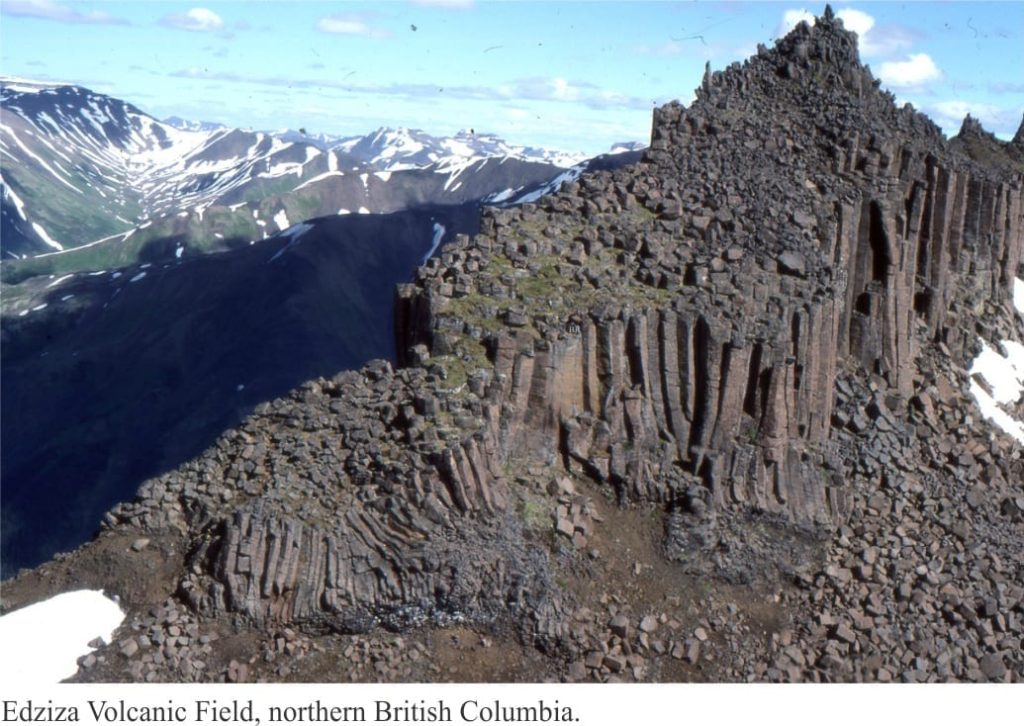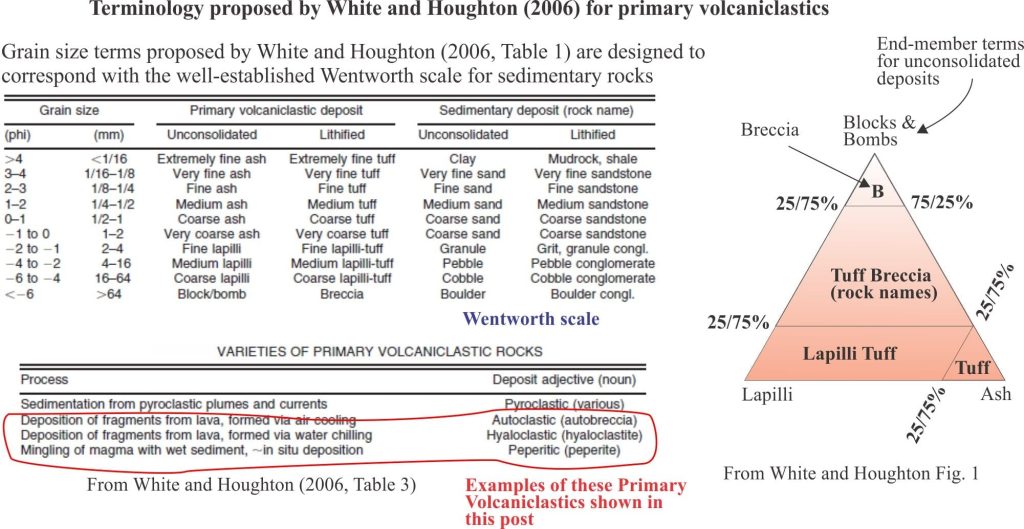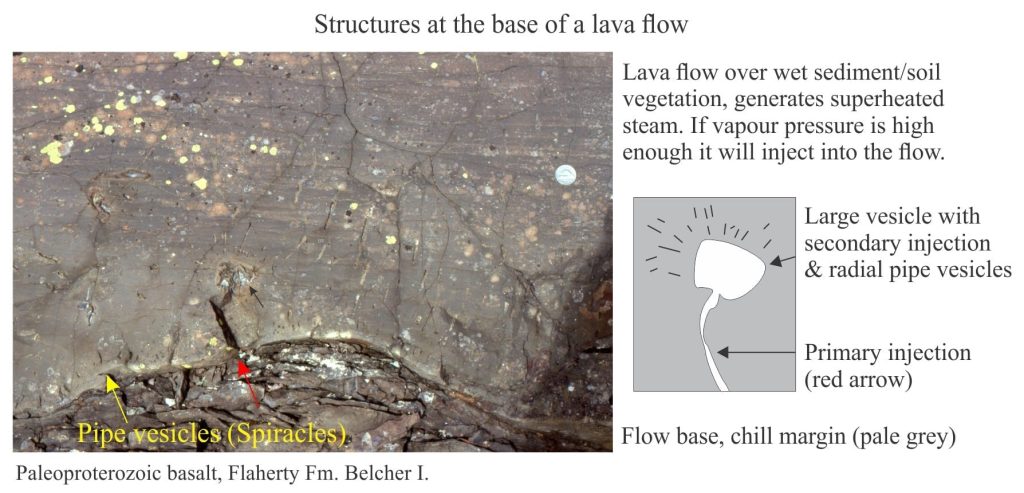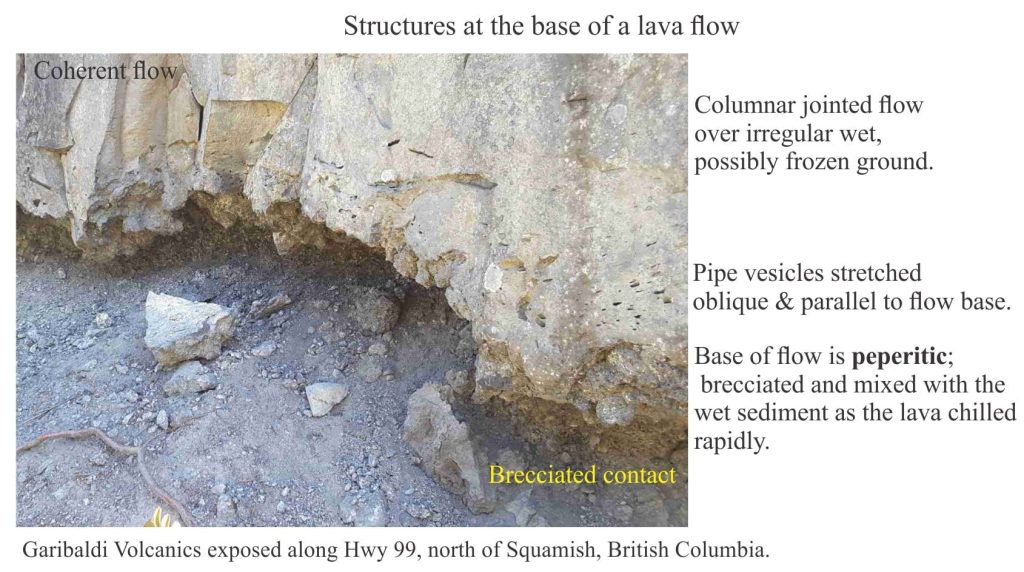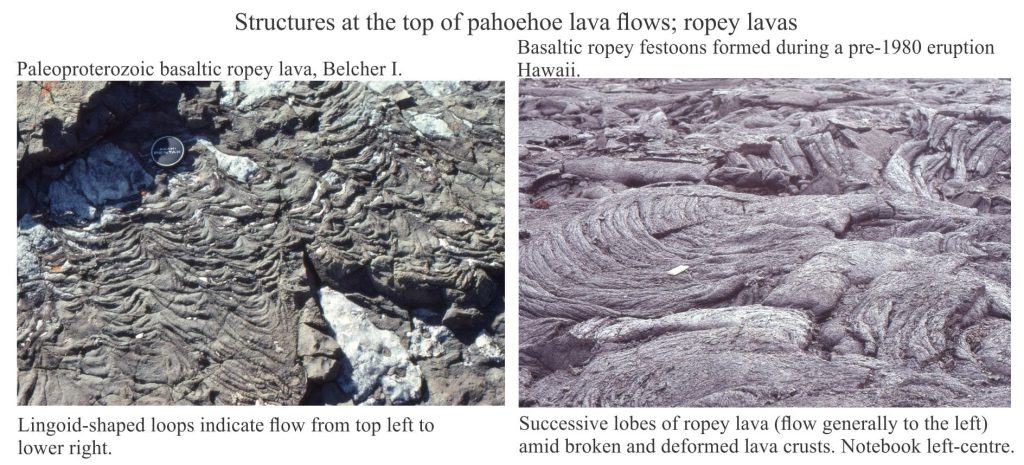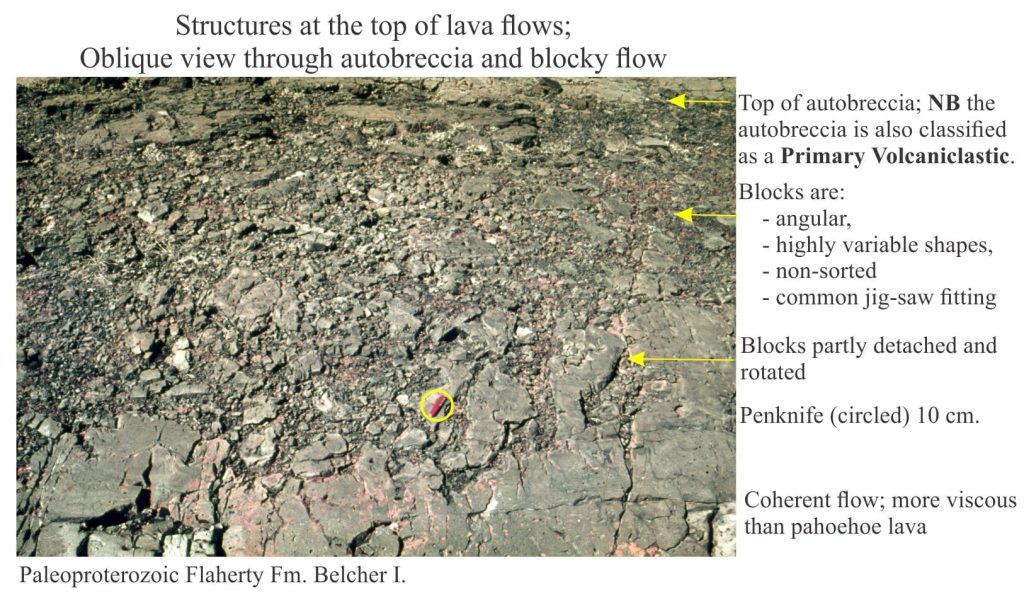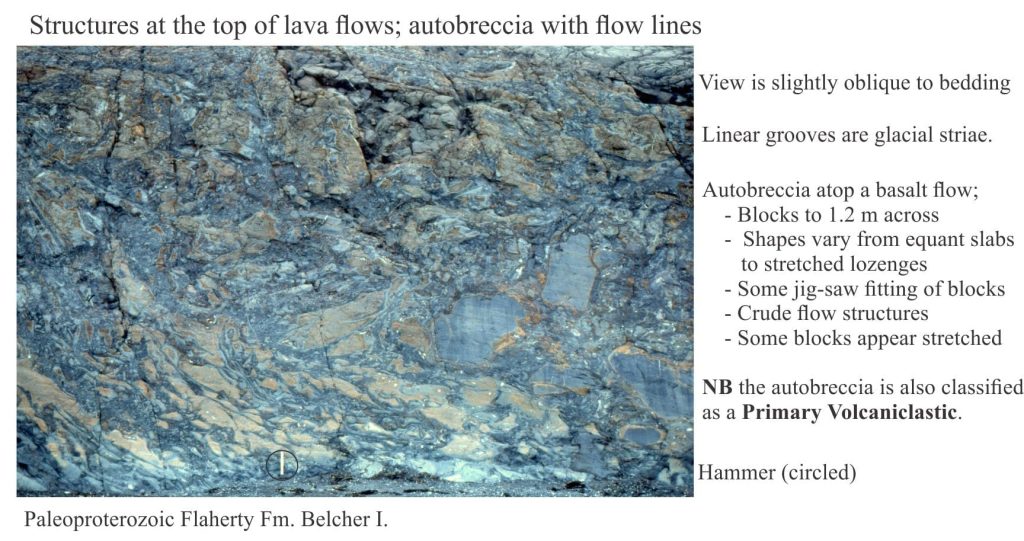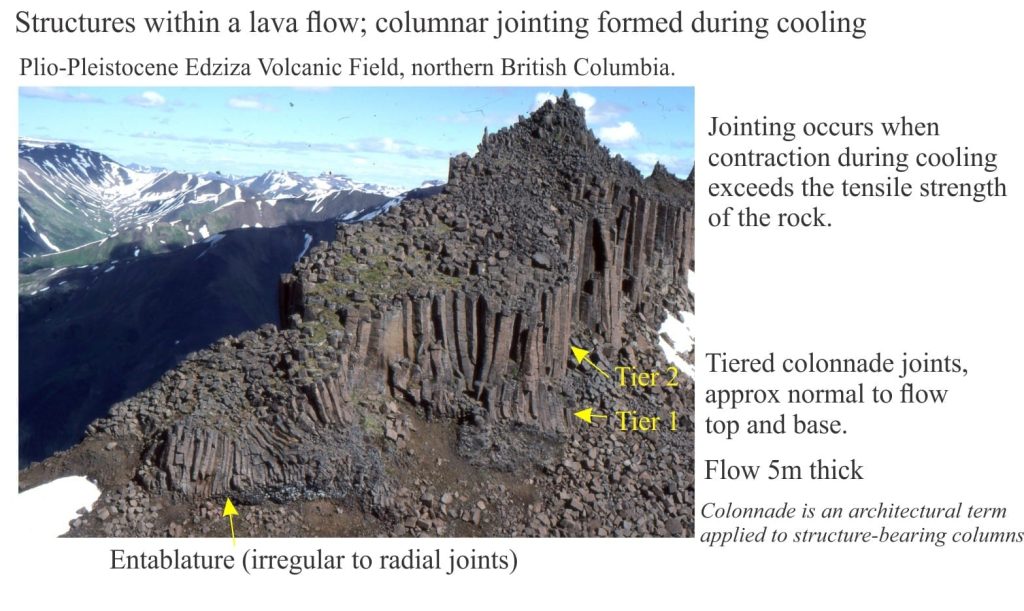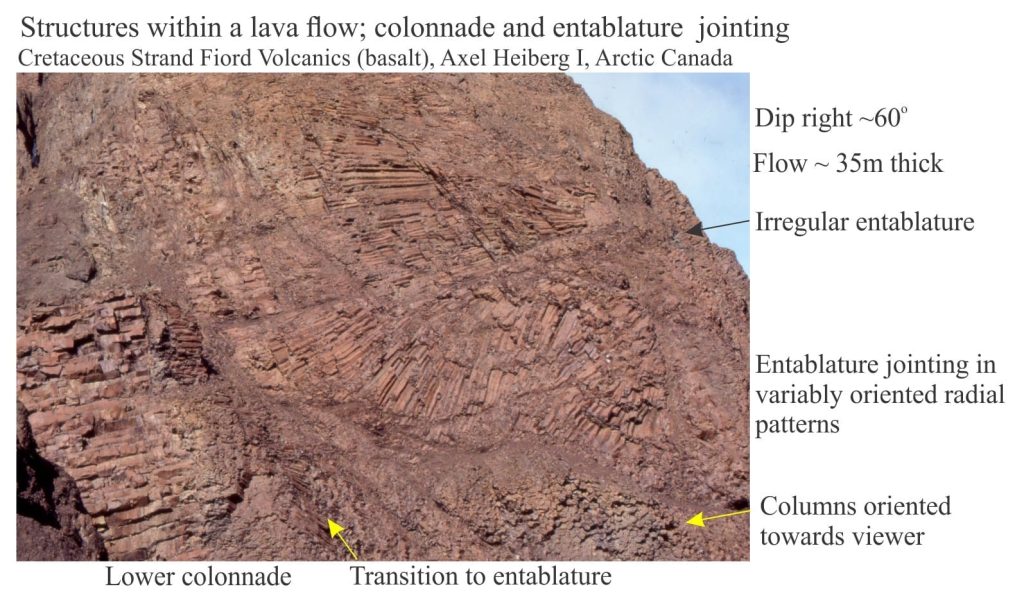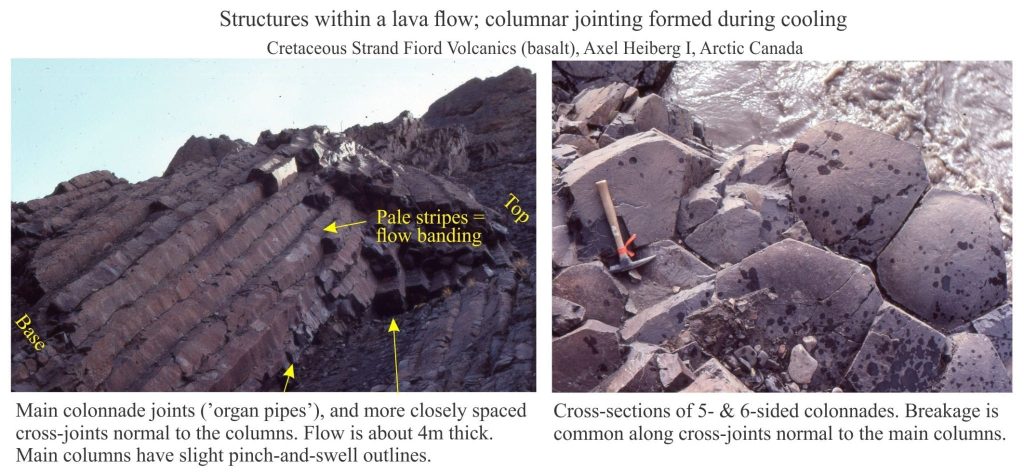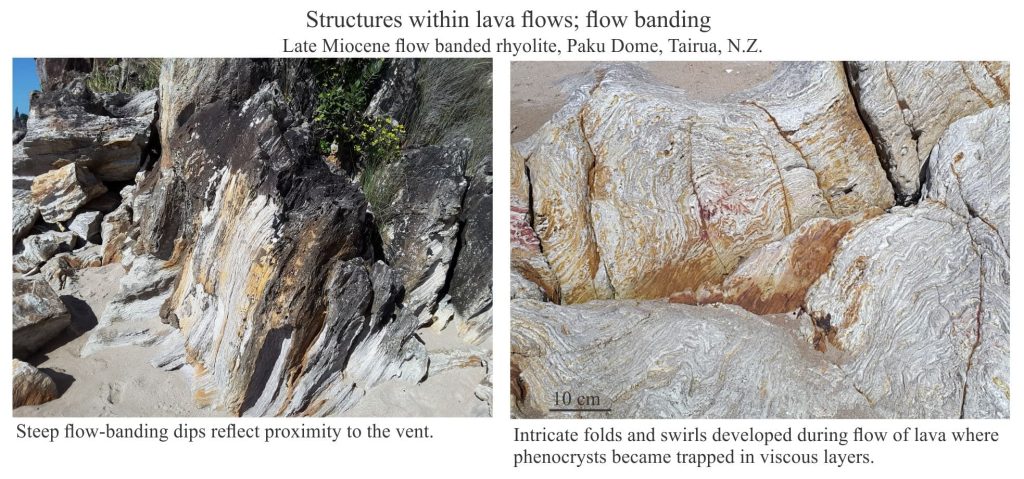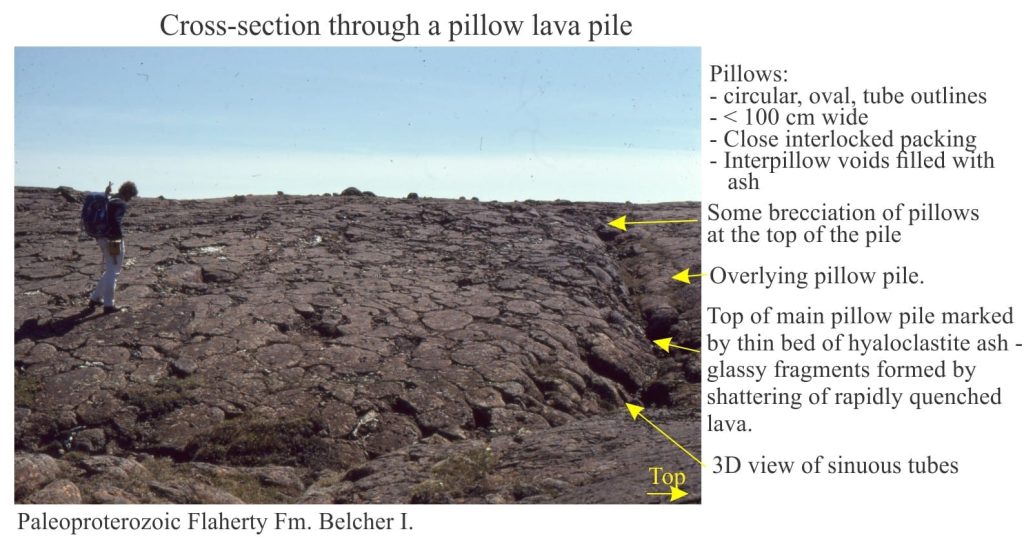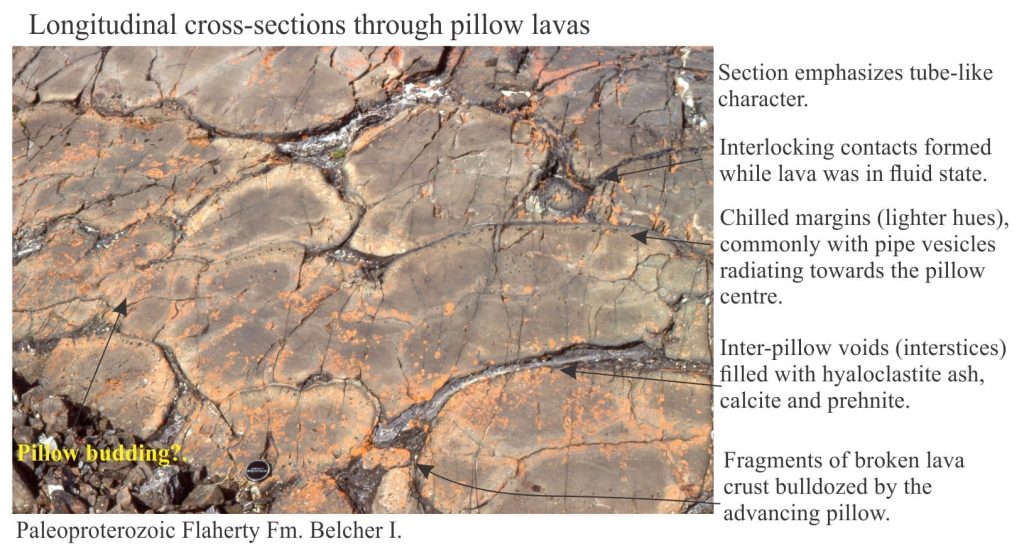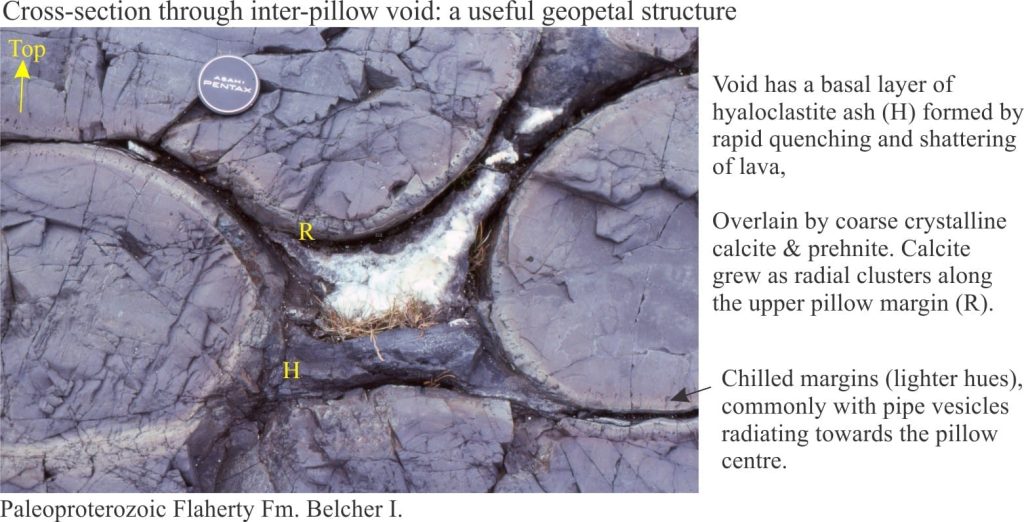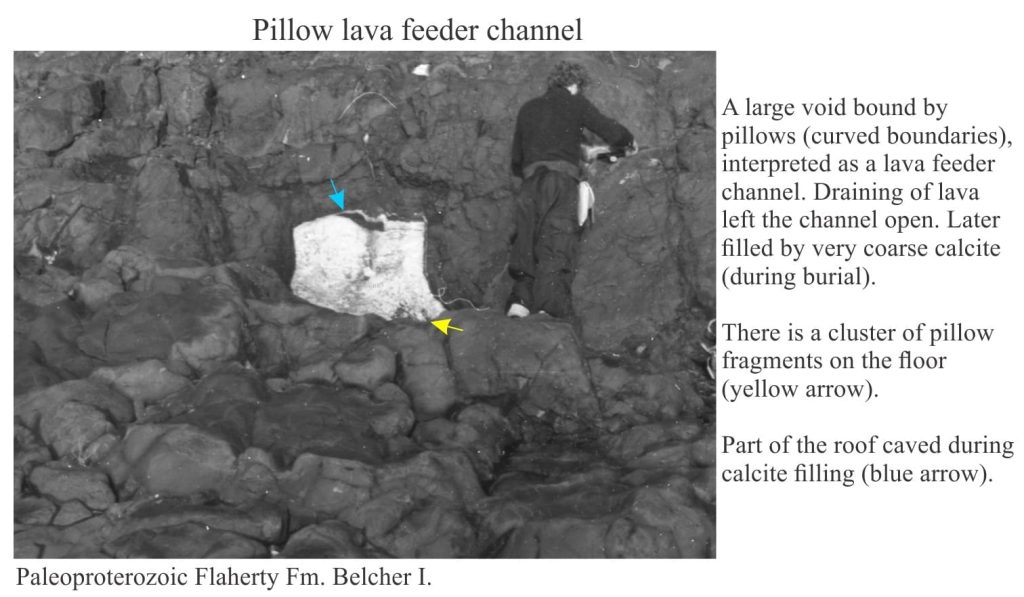A look at lava flows in outcrop
This is part of the How To… series on describing rocks – in this post describing and interpreting lava flows in outcrop. Although the series focuses on sediments and sedimentary rocks, I have added these posts on volcanics because of their importance to sedimentary basins and basin stratigraphy.
Volcanic eruptions catch our attention, even the least violent. One of the more spectacular recent effusions saw the east rift zone of Kilauea Volcano spew highly mobile basaltic lava from May 3 to September 4, 2018, destroying property and infrastructure. Terrifying for residents, morbidly thrilling for scientists.
Eruptive centres within sedimentary basins or along their margins act as dynamic loads that contribute to basin subsidence, effect geothermal gradients that can alter the conditions for organic and inorganic diagenesis, and contribute sediment. Lava flows are common additions to the stratigraphy of many sedimentary basins. The erosion of lava flows also produces debris that is reworked and redeposited by subaerial and submarine sediment gravity flows, and fluvial systems.
The images that follow illustrate some of the outcrop characteristics of lava flows and pillow lavas, organized thus:
- flow-base structures
- flow top structures
- internal structures
- pillow lavas
Fragmented debris such as autobreccias and peperites are classified as Primary Volcaniclastics, but are included here because their formation is directly associated with flowing lava. The first diagram, cobbled together from White and Houghton (2006) summarizes this association of structures and processes.
Additional photos of volcanic rocks and volcaniclastic facies are gathered in the Atlas of Volcanoes and Volcanic Rocks.
Related links in this series on outcrop descriptions
Accretionary aggregates and accretionary lapilli
Ignimbrites in outcrop and thin section
Volcanics in outcrop: Pyroclastic density currents
Volcanics in outcrop: Pyroclastic fall deposits
Mount St. Helens: 40th Anniversary
Volcanics in outcrop: Secondary volcaniclastics
Sedimentary structures: Alluvial fans
Sedimentary structures: coarse-grained fluvial
Sedimentary structures: fine-grained fluvial
Sedimentary structures: Mass Transport Deposits
Sedimentary structures: Turbidites
Sedimentary structures: Shallow marine
Other useful links
Describing sedimentary rocks; some basics
Measuring a stratigraphic section
Lava flows: base of flow structures
Lava flows: flow-top structures
Lava flows: flow interior
Pillow lavas
References
J.D.L White and B.F. Houghton, 2006. Primary volcaniclastic rocks. Geology, vol. 34, Issue 8.
Many Volcanology text books are oldish, but no less excellent for all that. And as far as book prices go, not too expensive. Here are three excellent titles. Of course there are newer more expensive titles…!
L. Parfitt, and L, Wilson, 2008. Fundamental of Physical Volcanology.John Wiley & Sons, 256 p.
H-U, Schminke, 2004. Volcanism. Springer, 324 p.
Williams, and A.R. McBirney, 1979. Volcanology. Freeman, Cooper & Co, 397 p.
